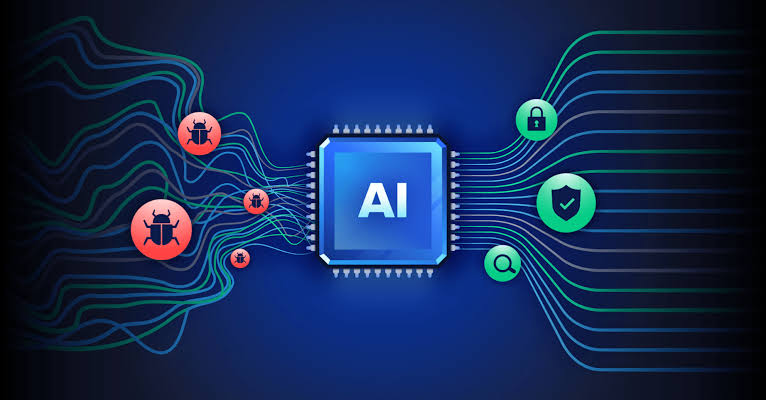AI has fundamentally reshaped quality control by enhancing speed, precision, and predictive capabilities. From computer vision inspections to autonomous QC systems, AI allows businesses to maintain higher standards while reducing costs and waste.
Artificial intelligence has transformed quality control across industries, from manufacturing and pharmaceuticals to food production and electronics. Traditional quality inspection processes relied heavily on manual labor and simple rule-based systems, which were prone to errors and slow response times. In 2025, AI has made quality control faster, more accurate, and more predictive by leveraging machine learning, computer vision, and real-time analytics.
Here are the top ten AI applications in quality control that are driving efficiency and ensuring product reliability.
10. Computer vision for defect detection
Computer vision remains one of the most widely adopted AI technologies for quality control. By analyzing high-resolution images or video streams, AI can identify surface defects, cracks, misalignments, or missing components in real time.
Industries like automotive and electronics rely on computer vision for assembly line inspections, ensuring that faulty parts are removed before reaching the customer. Modern algorithms can now detect even micro-defects with higher precision than human inspectors, reducing costly recalls and waste.
9. Predictive maintenance and anomaly detection
AI-powered predictive maintenance helps ensure product quality by preventing defects caused by equipment failures. Machine learning algorithms analyze sensor data from machines to predict when components might fail or produce substandard output.
This approach is used in industries like aerospace, chemical production, and heavy manufacturing, where equipment precision directly affects quality. By detecting anomalies early, manufacturers can schedule maintenance without disrupting production or compromising quality.
8. AI-based real-time process monitoring
Real-time process monitoring powered by AI allows production systems to adjust automatically when irregularities are detected. By processing streams of data from IoT sensors, AI can identify inconsistencies in temperature, pressure, or vibration that may affect product quality.
This is particularly valuable in industries like pharmaceuticals or food processing, where strict quality standards must be met consistently. In 2025, AI-driven monitoring systems have become faster and more accurate, enabling proactive adjustments before a defect occurs.
7. Natural language processing for quality documentation
Quality control is not only about detecting physical defects—it also involves extensive reporting and compliance. AI-powered natural language processing (NLP) is now used to automate quality reports, analyze production logs, and verify compliance with regulatory requirements.
By scanning thousands of records and inspection notes, NLP systems can flag inconsistencies, identify recurring issues, and generate comprehensive summaries. This reduces human error in documentation and ensures regulatory readiness.
6. AI-driven visual inspection robots
Robotics integrated with AI has brought automation to new heights in quality control. These robots use advanced cameras and AI models to inspect products at high speeds while maintaining accuracy.
In 2025, collaborative robots equipped with AI vision are used in automotive, electronics, and packaging lines to check for defects that are invisible to the naked eye. These robots improve throughput while reducing fatigue-related errors in human inspections.
5. Deep learning for pattern recognition
Deep learning algorithms excel in recognizing complex patterns in visual, audio, and sensor data. For quality control, they are used to identify subtle irregularities that traditional rule-based methods might overlook.
Applications include detecting structural weaknesses in materials, analyzing chemical compositions, and recognizing sound anomalies in machinery. Deep learning improves with more data, which makes it a valuable long-term investment for industries aiming for near-zero defects.
4. AI for supply chain quality tracking
Ensuring quality doesn’t end at the factory—it extends to the supply chain. AI-powered supply chain quality control uses predictive analytics to monitor supplier performance, detect quality risks, and prevent defective components from entering production lines.
By analyzing supplier data, shipment logs, and past defect trends, AI can predict which shipments need additional inspection. This level of proactive monitoring is especially critical in automotive, aerospace, and consumer electronics manufacturing.
3. Generative AI for simulation and testing
Generative AI is increasingly used to simulate manufacturing processes and product performance under various conditions. This helps identify potential quality issues before products are physically produced.
By generating synthetic data for stress testing, thermal analysis, and component interactions, AI can optimize production parameters to minimize defect rates. Generative AI is particularly useful in industries where physical testing is expensive or time-consuming, such as aerospace and biomedical devices.
2. AI-powered statistical process control
Statistical process control (SPC) has long been a staple of quality management, and AI has taken it to the next level. AI-powered SPC analyzes massive amounts of production data in real time to identify trends, outliers, and early signs of process drift.
This application helps manufacturers maintain consistent product quality and quickly intervene when production deviates from acceptable limits. In 2025, AI-enhanced SPC integrates with IoT sensors and cloud platforms for instant alerts and automated adjustments.
1. Autonomous quality control systems
At the top of the list are fully autonomous quality control systems, which combine computer vision, machine learning, and robotic automation into a single integrated workflow. These systems can inspect, analyze, and even reject defective products without human intervention.
In 2025, autonomous QC systems are being deployed in smart factories where high-speed production demands instant decision-making. They reduce labor costs, improve accuracy, and provide data insights for continuous improvement, setting the standard for Industry 4.0 and beyond.
